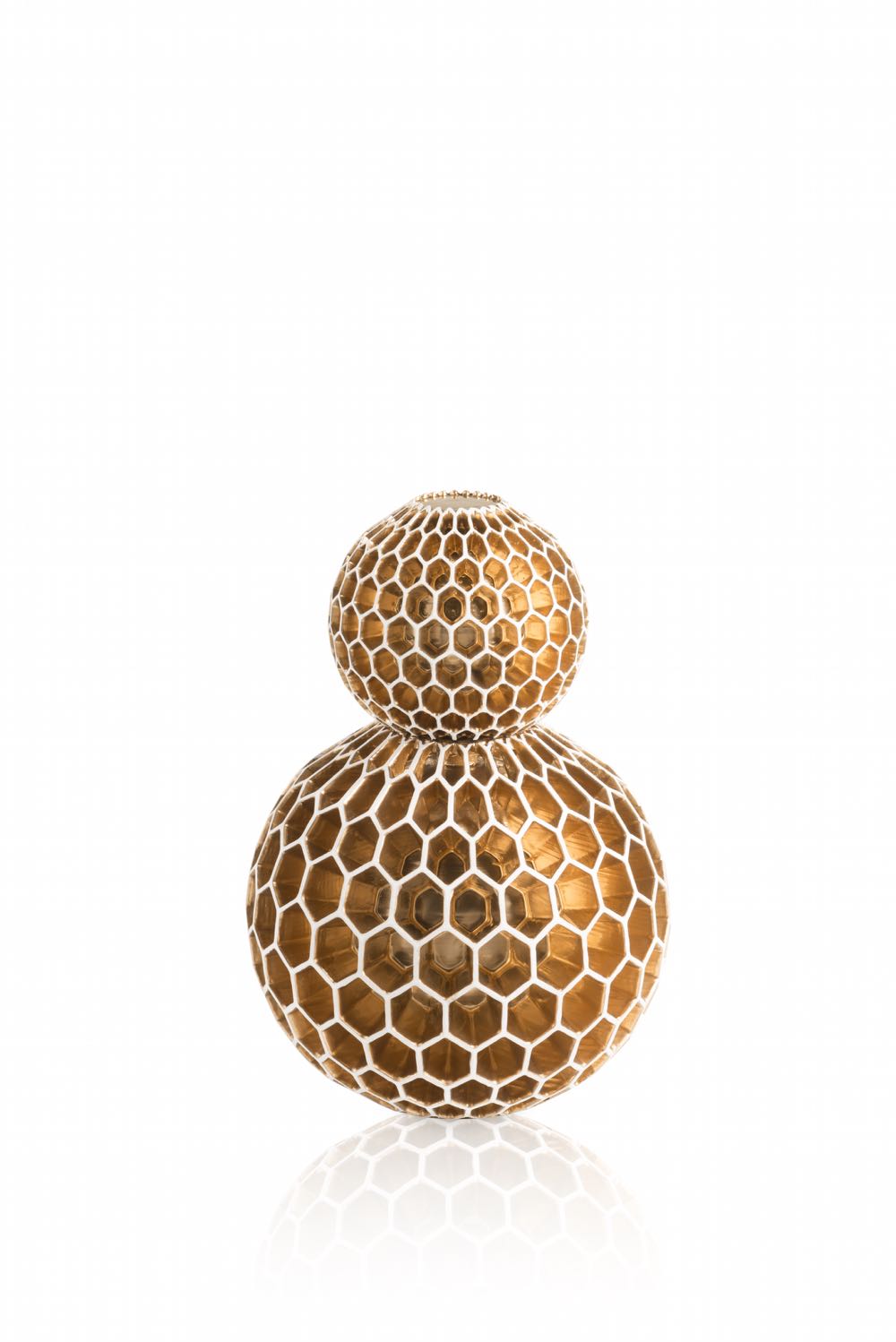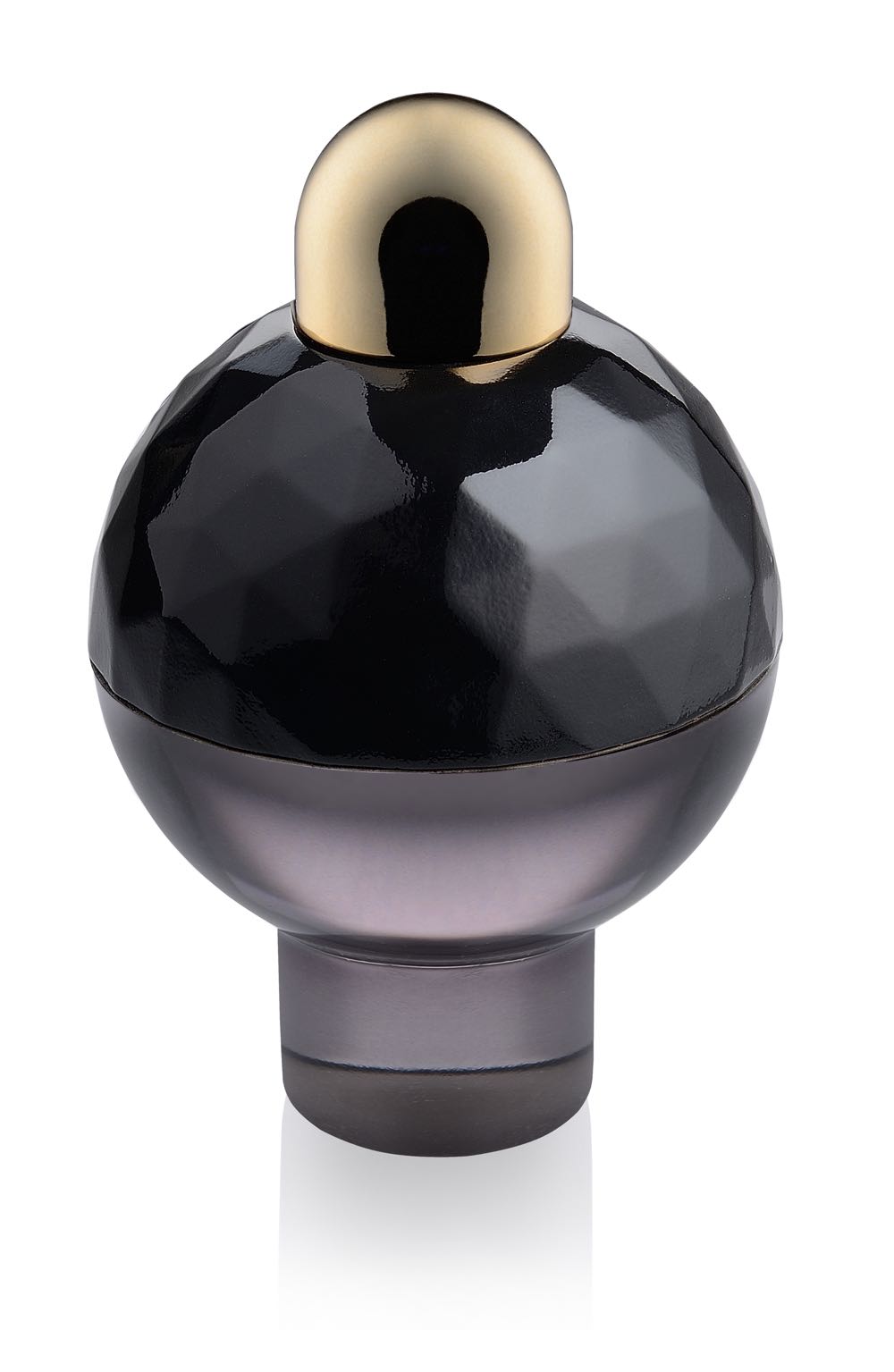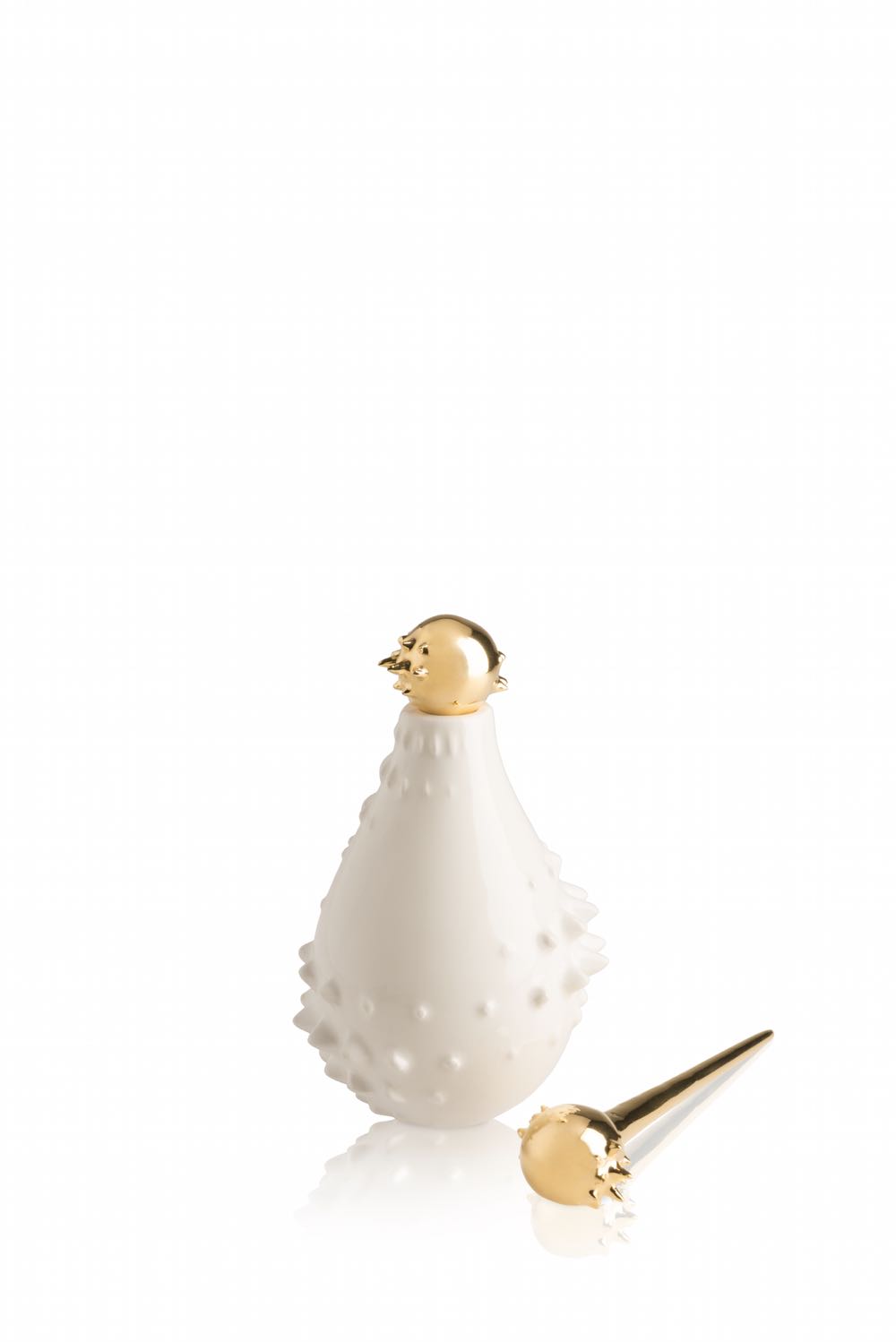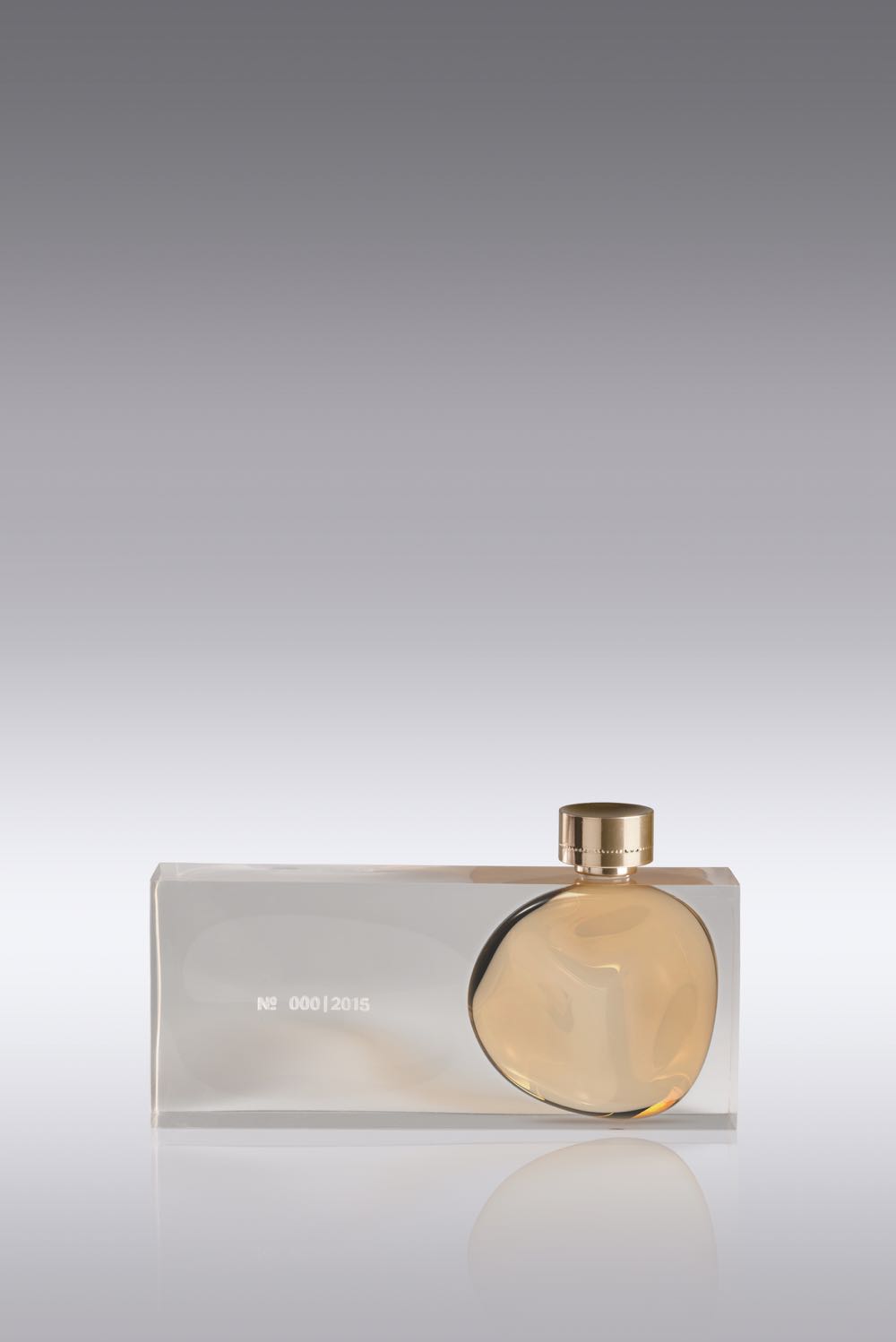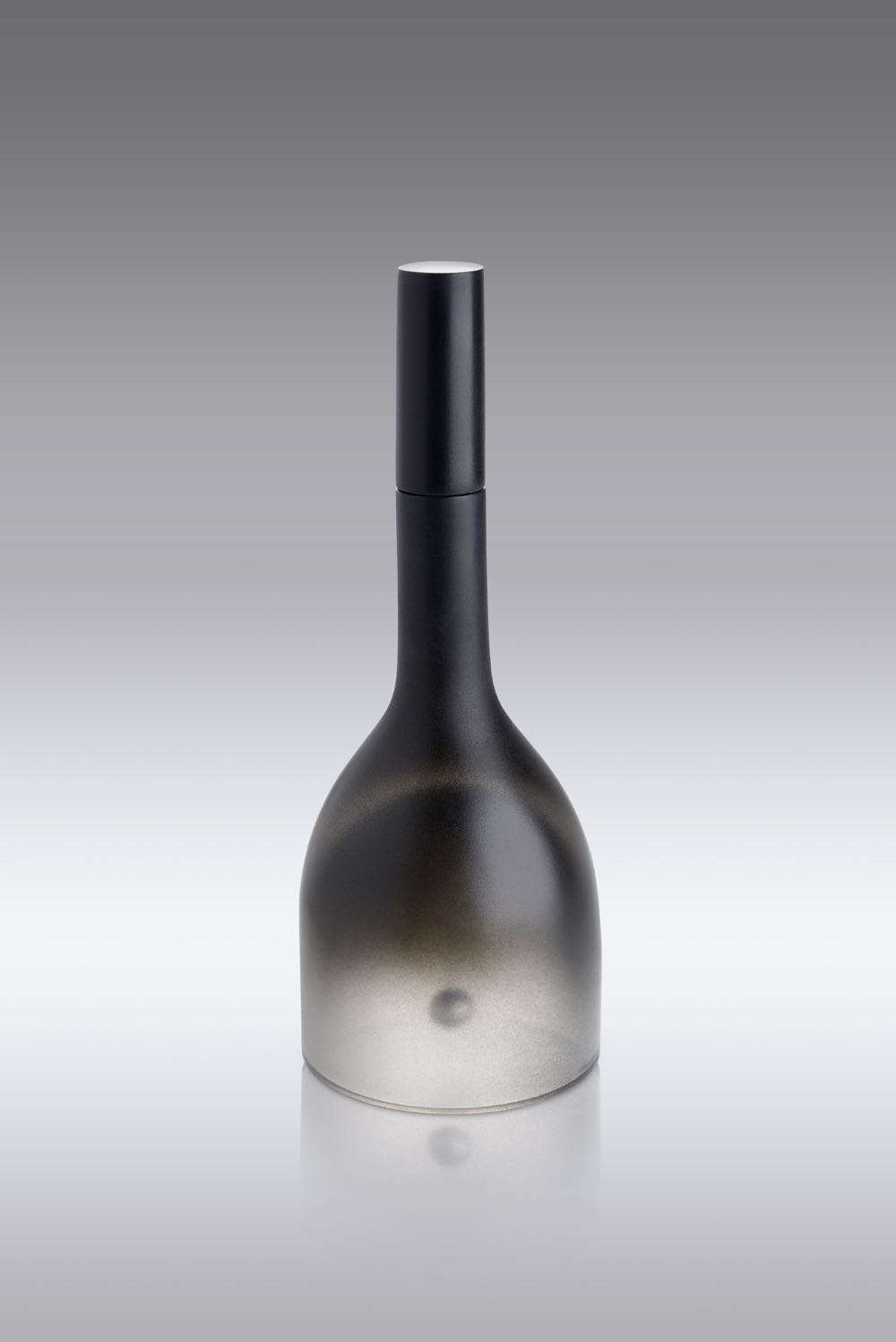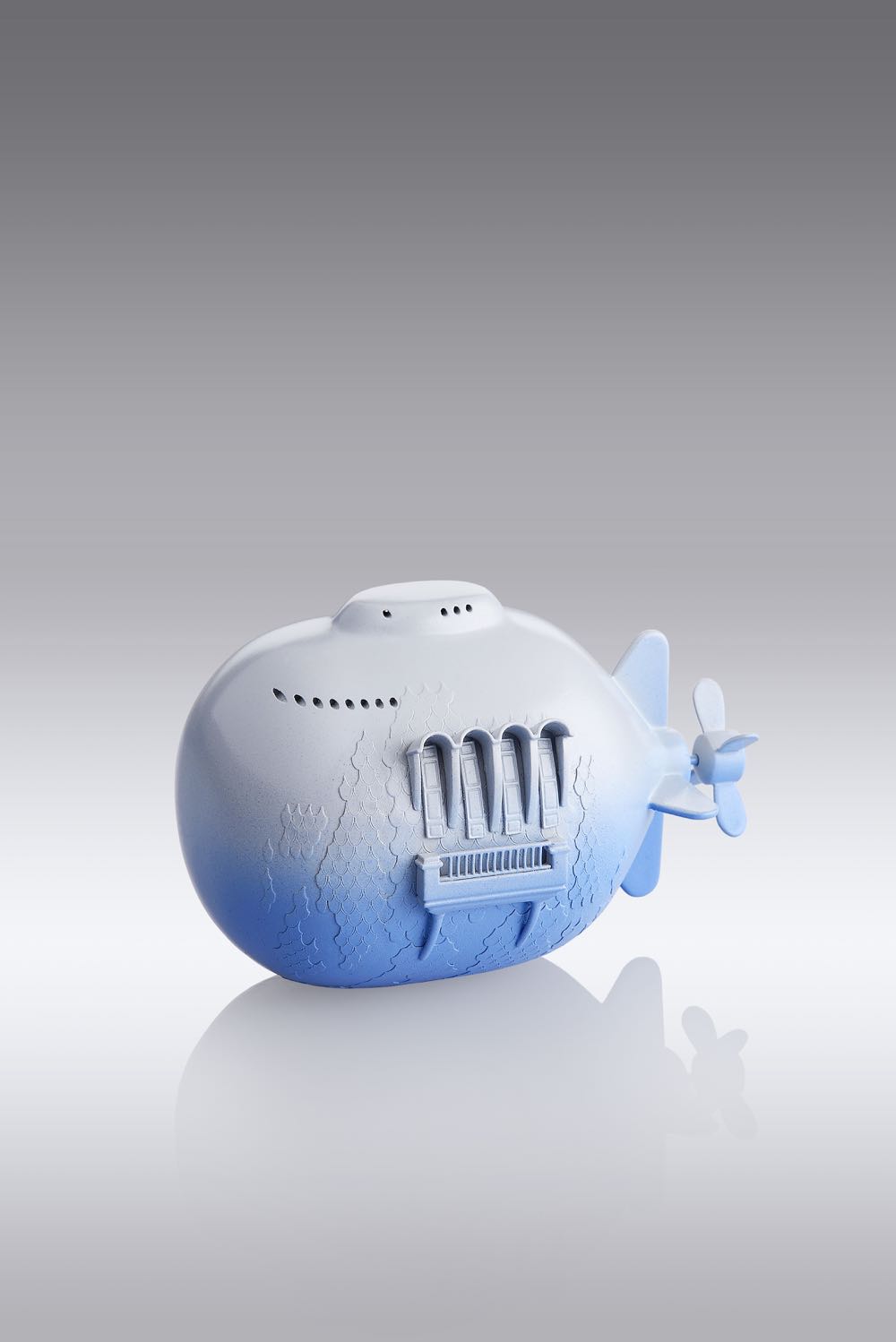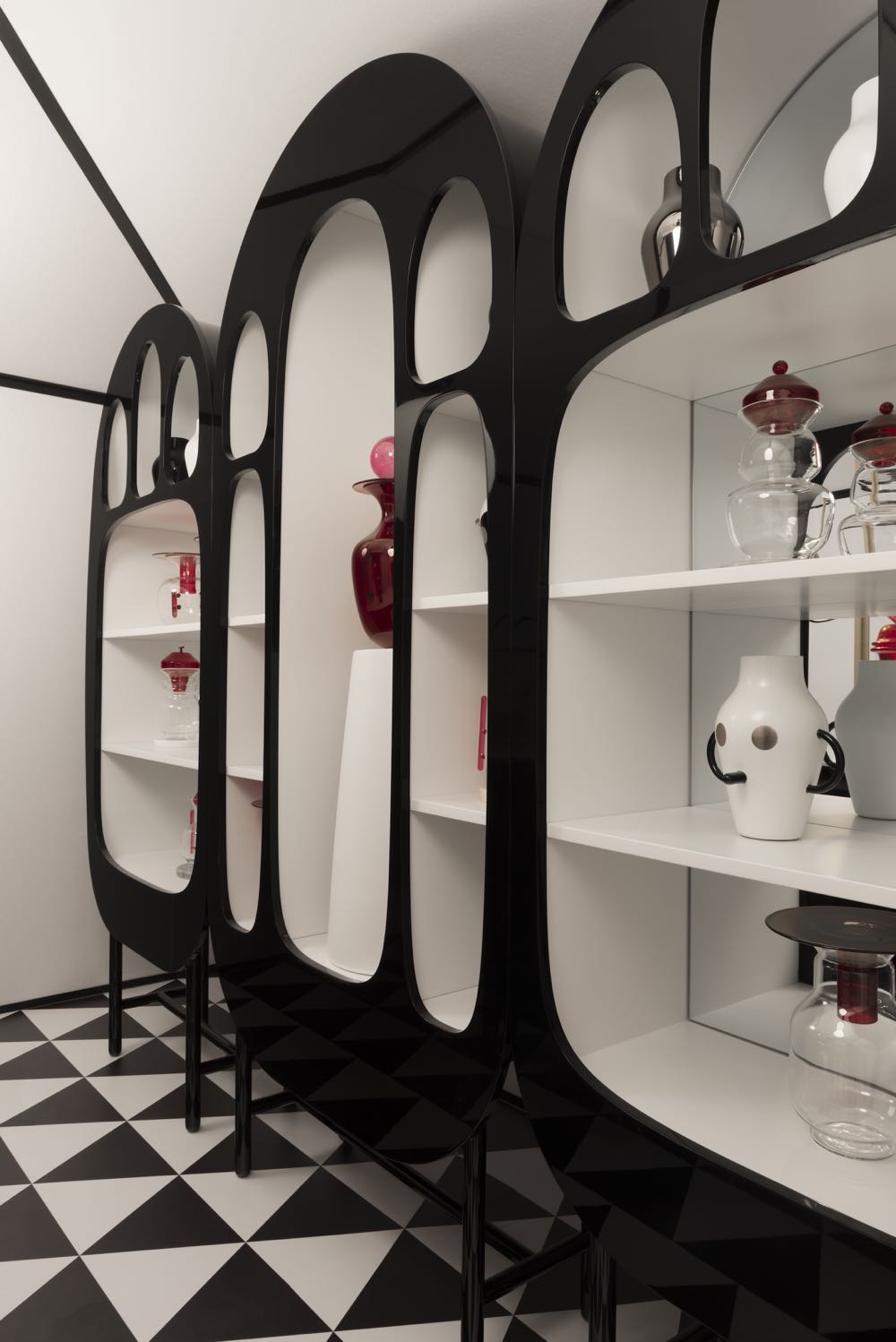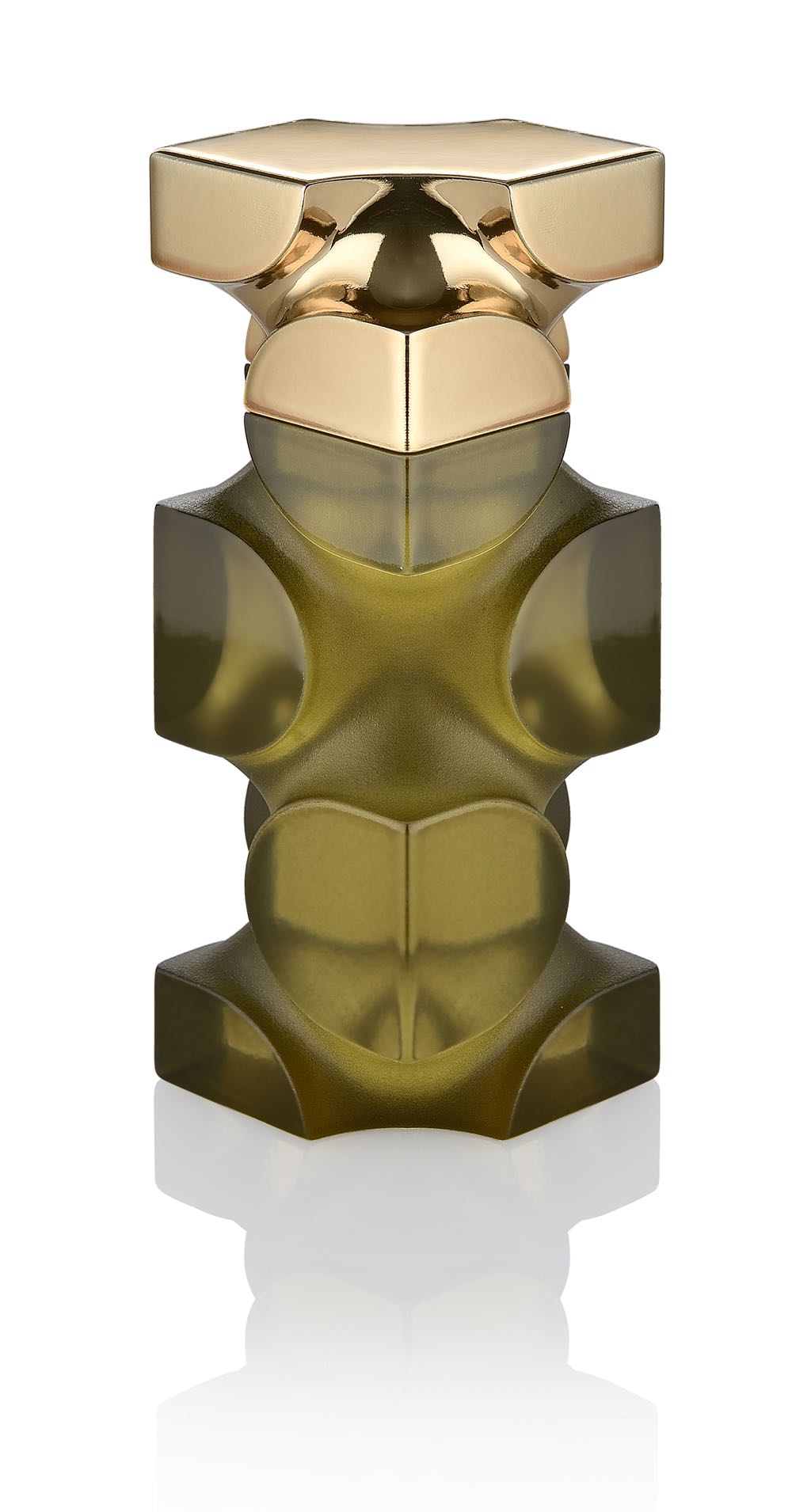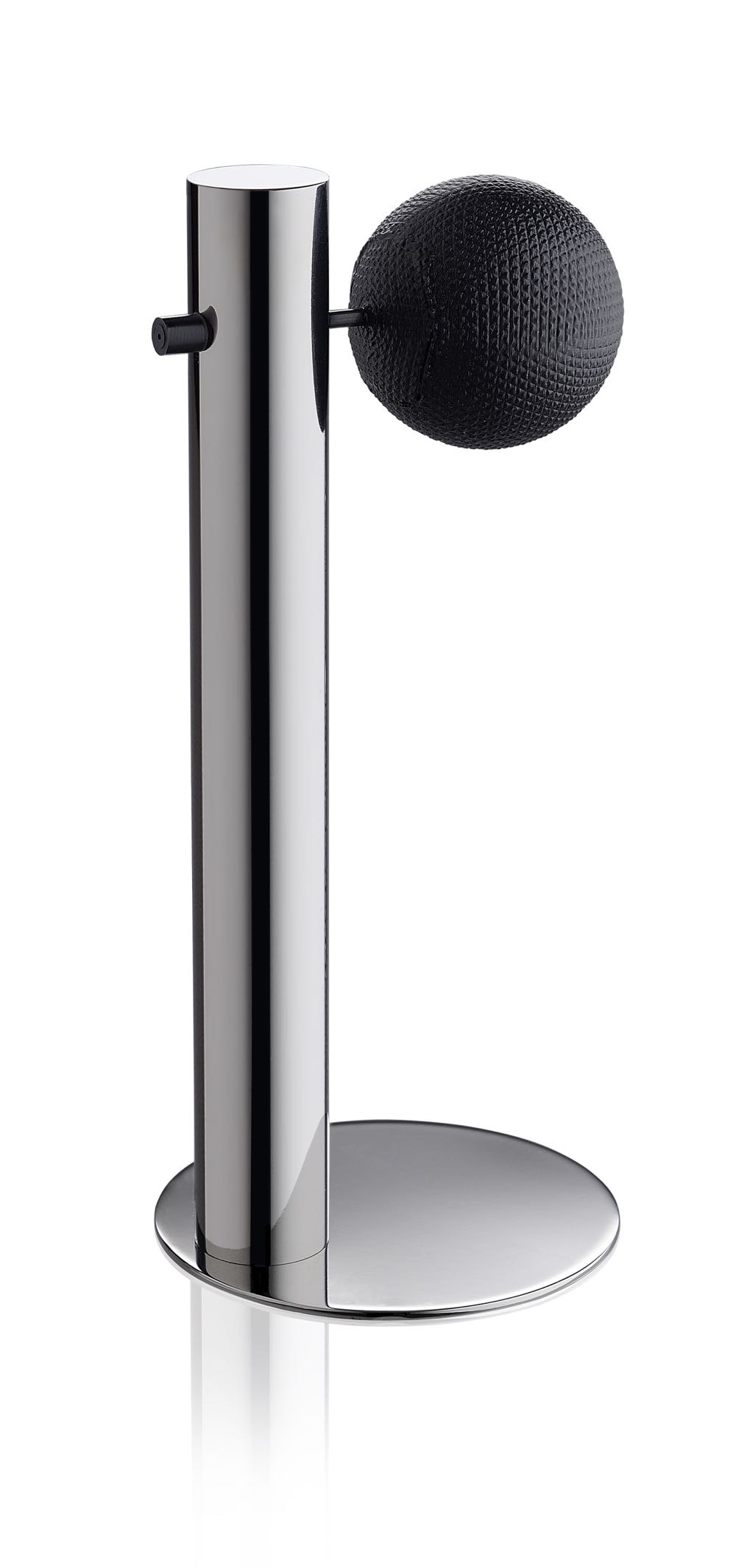Created to coincide with Milan’s Design Week in April and to extend through into late May for Expo, Be Open’s The Garden of Wonders: A Journey Through Scents was a delightful breather from the hustle and bustle of both design week and central Milan. Situated in the Botanical Gardens of Brera, tucked away behind Brera Academy itself, the exhibition brought together the history of scent, design and craft in a delightful way.
A little oasis in the centre of the Brera design quarter, Orto Botanico Brera is regularly utilized for community projects and when not being used for exhibitions or installations, acts as a place where Milanese can wander through garden beds of flowers and herbaceous plants and sit and enjoy the mingling scents of all the vegetation. As a place to host an exhibition on the history of scents it was picturesque and perfect.
The exhibition set up was designed by Ferrucio Laviani and consisted of a number of temporary structures painted in metallic gold that shone in the sunlight in dynamic contrast to the surrounding greenery. The largest building presented the history of perfumes and an opportunity to experience the raw ingredients, while eight small garden pavilions known as Houses of Wonders, each revealed a designer's interpretation of a high quality but now defunct perfume house. The designers chosen for this section of the exhibition included Fernando & Humberto Campagna, Dimorestudio, Front, Jaime Hayon, Piero Lissoni, Jean-Marie Massed, Nendo, and Tord Bontje.
A ninth conservatory-style building called Vision in a box, housed 10 bottles to contain the "Fragrance of the Future" with each bottle by a different designer. The list included Werner Aisslinger, Analogia Project, Philippe Bestenheider, GamFratesi, LucidiPevere, Karim Mekhtigian, Mist-o, Ludovico + Roberto Palomba, Thukral & Tagra and Victor Vasilev.
Rather than just recount the history of the development of perfume through the ages from 2000BC to the present day, the exhibition was a way to show how collaboration with design can be relevant to the ongoing existence of small brands - particularly those with a reliance on craft and local production. In an era of globalisation and mass production many things of limited production and high quality have failed to compete and as a consequence no longer exist. Perfume houses were a good example of this and because they require craft in the making of the scent and the packaging The Garden of Wonders exhibition was part of a global project called Made in...., an investigative tour on the relationship between design and small producers. Its aim is to help small producers adapt to new retail demands through understanding the value design can bring to branding, packaging and marketing.
Perfume was chosen as the exhibition theme because of its highly crafted, almost alchemic mix of ingredients that is worked into a scent that must have wide, if not universal appeal. Perfume as an end product also has several of the elements that are key to Be Open's ongoing research: a design project (the bottle) and a strong communication tool (the packaging).
“BE OPEN is a way to look to the world always with new eyes, to bring together people and ideas to explore what the future can offer enhancing exchange between creative minds”
Founder of BE OPEN, Yelena Baturina
Fernando & Humberto Campagna were given the opportunity to create a new concept for French perfume brand Biette, who traded from 1892 to 1950.
The wicker interior of the Biette environment created by Fernando & Humberto Campagna, features at its centre, their porcelain bottle design in the shape of a marine animal for the scent Flora & Fauna. In contrast to these shapes and materials, some of the brand's original flacons were produced by Baccarat.
"For the conceptual installation our influence was a cave named 'Grota do Veredas' located in the state of Bahia in Brazil.The shape of the wicker installation we created to host the bottle of perfume reminds us of the paths of this cave" Fernando & Humberto Campagna.
Bertelli existed between 1888 and 1960 and grew from humble origins of a revolutionary medicated patch to a cosmetics company manufacturing scented soaps, perfumes and powders. A new conceptual scent was developed for the brand called 'Rain' and Dimorestudio's installation featured showers of water cascading to the floor of stone brass laid in interlocking diamond patterns.
The British-French perfume company Felix Boissard was established around 1900 by John-Ernest Jewel. It is probable that the company had a predecessor in the form of French company Pennes Fils et Boissard. A new fragrance called 'Between day and night' was created for the long forgotten brand as part of the The Garden of Wonders exhibition.
Like Hayon's apothecary style installation, Lissoni choice to create a laboratory them for his installation for Lundborg however his execution is all clean lines and light and dark. Like a photographer's light box the glass flacons and lab equipment jumped out in stylised 3D.
In typical Nendo fashion his installation for Russian brand Koehler&Co, was barely there. His new bottle design for the 19th century company's signature fragrance 'Fandango', was presented in two forms - 'Fire' and 'Ice' labelled +23.1 and -12.3 respectively, representing Moscow's average temperatures in summer and winter. The contents were coloured accordingly in a warm or cool tone.
While all the other installations were housed in their golden gazebos behind a perspex window, Swedish designers Front created a more intriguing installation by concealing the contents behind a wall of black curtains. Only one person at a time was allowed to enter the structure and people gathered around or queued in silent anticipation. Once inside the viewer was conform with a small room of sand with a fretworked cabinet in timber overgrown with vines. In the centre of the cabinet was their miraculous new bottle for defunct Parisian brand Guyla. The perfume bottle is almost a cone with the liquid perfume sandwiched between an inner and outer layer of glass. But the real magic is that the bottle is lit from within (don't ask me how, it just is).
Like the bottle itself the installation was scattered with tiny dots of LED light to conjure up the notion of fireflies in a night sky.
For A vision in a Box, the third component of The Garden of Wonders exhibition, ten different designers created perfume bottles to hold a conceptual "fragrance of the future".
Their interpretations of one, seemingly simple vessel that in all cases serves the exact same function, shows just how miraculously varied design can be in the hands of true creatives.
At one end of the spectrum Werner Aisslinger created 'Coral', a jewel-like form based on repeating hexagon shapes of semi-translucent glass (think honeycomb) applied to what the designer describes as a pine cone shape. The result is glamorous and exotic, Perhaps the most unusual shaped bottle of the ten is by Indian artists Thukral & Tagra, whose flacon takes the shape of a rotund submarine. The basic concept of this shape was to illustrate what the artists refer to as "the submersed emotions and desires" present in perfume. The full complement of the bottles created for A Vision in a Box are shown in the gallery below.
For more information on this incredible project go to the Be Open website here.
